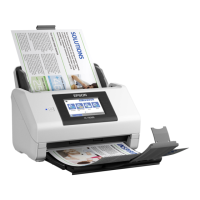❏ A certicate of the PKCS#12 format obtained from a computer
❏ Private Key: Do not congure.
❏ Password: Optional
❏ CA
Certicate
1/CA
Certicate
2: Do not
congure.
4.
Click OK.
A completion message is displayed.
Note:
Click Conrm to verify the certicate information.
Related Information
& “Running Web Cong on a Web Browser” on page 34
CA-signed Certicate Importing Setting Items
Items Settings and Explanation
Server Certicate or Client Certicate Select a certicate’s format.
For SSL/TLS connection, the Server Certicate is displayed.
For IPsec/IP Filtering or IEEE802.1x, the Client Certicate is displayed.
Private Key If you obtain a certicate of the PEM/DER format by using a CSR created from a
computer, specify a private key le that is match a certicate.
Password If the le format is Certicate with Private Key (PKCS#12), enter the password
for encrypting the private key that is set when you obtain the certicate.
CA Certicate 1 If your certicate’s format is Certicate (PEM/DER), import a certicate of a
certicate authority that issues a CA-signed Certicate used as server certicate.
Specify a
le
if you need.
CA Certicate 2 If your certicate’s format is Certicate (PEM/DER), import a certicate of a
certicate authority that issues CA Certicate 1. Specify a le if you need.
Deleting a CA-signed
Certicate
You can delete an imported certicate when the certicate has expired or when an encrypted connection is no
longer necessary.
c
Important:
If you obtain a certicate using a CSR created from Web Cong, you cannot import a deleted certicate again. In
this case, create a CSR and obtain a certicate again.
1.
Access Web Cong, and then select the Network Security tab. Next, select SSL/TLS > Certicate or IPsec/IP
Filtering > Client Certicate or IEEE802.1X > Client Certicate.
2.
Click Delete.
Advanced Security Settings
>
Using a Digital Certicate
>
Conguring a CA-signed Certicate
97

